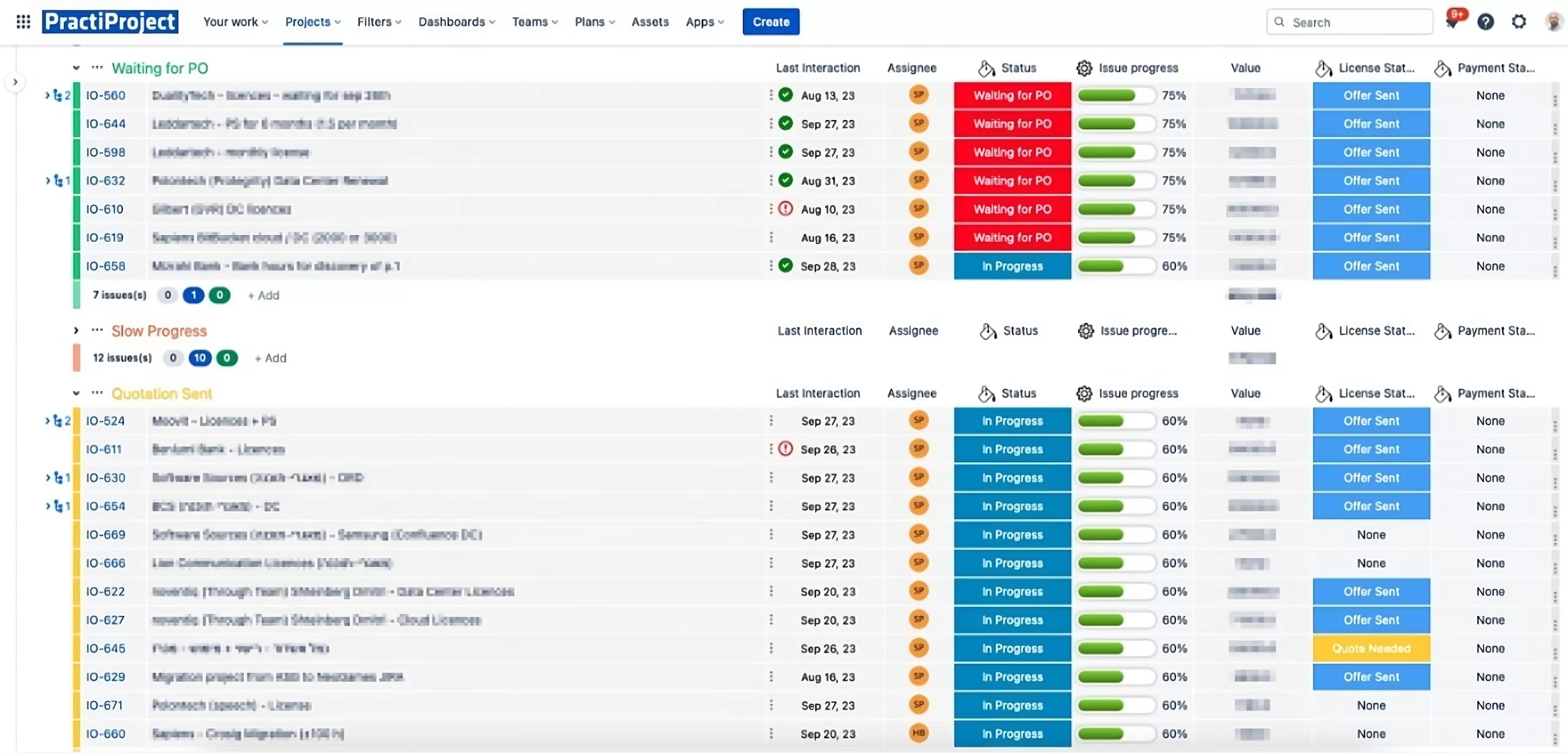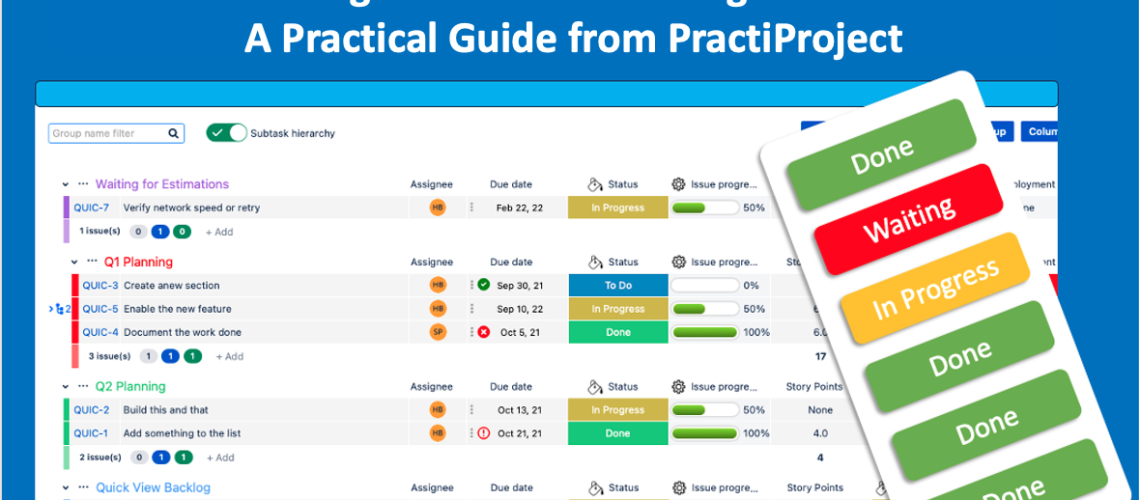Today, I’d like to share our journey of transformation in sales funnel management using Jira and the Quick View app. This journey has not only streamlined our sales processes but also enhanced our customer relationships and overall business efficiency.
Before implementing Jira, our sales team grappled with a series of challenges in managing our sales funnel. Our processes were primarily Excel-based, relying heavily on manual notes and email communication. Tracking multiple deals across various Excel files and scattered notes became a logistical nightmare, leading to data inconsistencies and limited data accessibility. We found ourselves drowning in email threads, making it increasingly challenging to maintain organized records of customer interactions and deal status updates. Timely responses to customer inquiries were often delayed due to the time spent sifting through emails. Calculating backlog sizes and efficiently allocating resources was a laborious task. We lacked a centralized system, making workload assessments prone to errors and resource allocation suboptimal. The lack of transparency in our processes led to misunderstandings among team members and missed opportunities.
Our decision to embrace Jira as a business application for deal management marked a turning point. Jira became our central repository for deal information, eliminating the need for juggling spreadsheets and notes. This streamlined our workflow and improved data accessibility for the entire team. Jira’s real-time update capabilities enabled instant communication among team members. We bid farewell to the chaos of email threads, and our responses to customer inquiries became swift and efficient. With Jira’s features, we could now calculate backlog sizes accurately and efficiently allocate resources, making data-driven decisions to keep our sales funnel running smoothly. Jira brought a newfound transparency to our sales processes. Every team member could monitor deal progress, view customer discussions, and track updates in real-time. This transparency reduced misunderstandings and enhanced overall accountability.

Our experience with Jira underscores its versatility as a business application. It’s not merely a project management tool; it’s a powerful solution for optimizing various business processes, including sales funnel management. Our sales funnel in Jira is a well-structured process divided into key stages, including leads, waiting for quotes, quote sent, waiting for purchase orders, and approved service. We’ve also incorporated groups for follow-ups on delayed or stalled deals and for lost deals, ensuring that no potential opportunity goes unnoticed. Throughout the sales funnel, we closely monitor essential deal data, including assignees, deal progress, last interaction dates, deal size, and custom status fields for quick visual updates. We’ve fully embraced Jira’s collaborative capabilities, especially during our daily sales meetings. Sharing screens and updating deal data in real-time has become a seamless part of our workflow. Each update generates a subtask, providing a clear history of all deal changes.
Our Sales Funnel in Jira
Our sales funnel in Jira is a well-structured process. We divided it into key stages:
- Leads: We create a ticket for each potential deal.
- Waiting for a Quote: Deals needing formal quotes.
- Quote Sent: Deals actively progressing.
- Waiting for PO (Purchase Order): Awaiting purchase orders.
- Approved Service: When the PO is received, work begins.
We also have groups for follow-ups on delayed or stalled deals and another for lost deals.
Monitoring Key Deal Data
Throughout the sales funnel, we keep an eye on key deal data:
- Assignee: Designates who’s handling a deal at any moment.
- Deal Progress: Visualizes the deal’s status with a progress bar.
- Last Interaction Date: Records the last customer communication.
- Deal Size: Sets the expected deal value.
- Custom Status Fields: For quick, visual status updates.
Recognizing the diversity of our customer base, we’ve tailored different boards for various customer segments, such as territories. This approach fosters collaboration and ensures meticulous tracking of every deal prospect. Efficiency is at the core of our deal management practices. We actively monitor deal aging to prevent stagnation and use markings like “!” or “X” to represent different aspects of a deal’s potential, streamlining evaluation. In our next article, we’ll delve deeper into how we manage customers who have started working with us, offering a comprehensive view of our end-to-end customer relationship management process.
Our journey with Jira and the Quick View app exemplifies how technology can empower businesses to streamline their sales funnel management. By customizing Jira to fit our unique needs and processes, we’ve achieved greater transparency, collaboration, and efficiency in managing our sales pipeline. This case study serves as an inspiring example for businesses seeking to optimize their sales operations with the right tools and strategies. I hope you’ve found our journey insightful, and I look forward to sharing more about our experiences in future articles. Stay tuned!
Quick View APP in the Atlassian Marketplace: QUICK-VIEW





